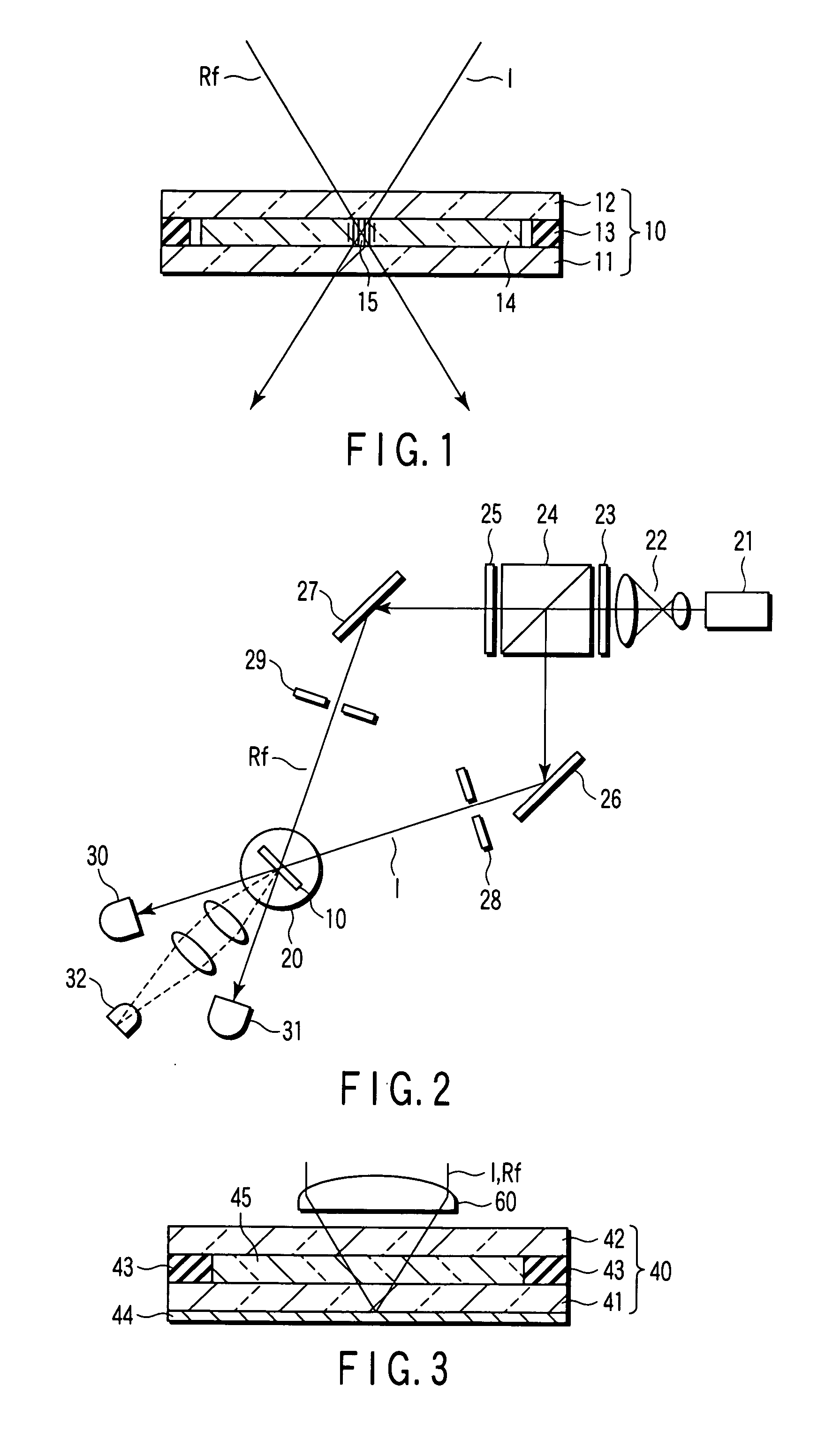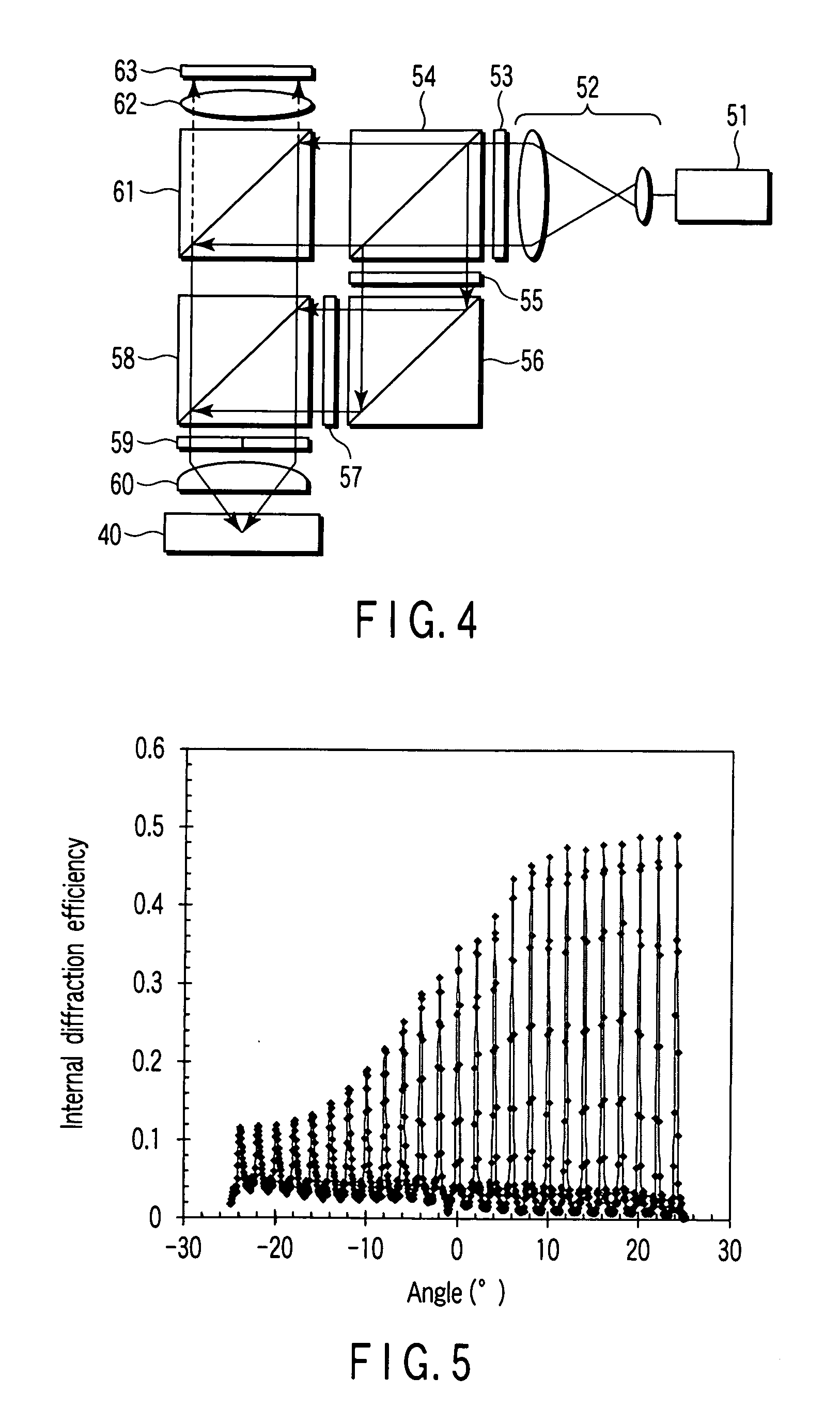Holographic recording medium
a recording medium and holographic technology, applied in the field of holographic recording mediums, can solve the problems of marked degradation of the polymerization initiator and poor storage stability
- Summary
- Abstract
- Description
- Claims
- Application Information
AI Technical Summary
Problems solved by technology
Method used
Image
Examples
example 1
[0062] Compounds shown in Table 1 were prepared. First, 3.02 g of 1,6-hexanediol diglycidyl ether (under the trademark Denacol EX-212 available from Nagase ChemteX, with an epoxy equivalent of 151) as an epoxy compound, 0.945 g of tetraethylene pentamine (TEPA) as a curing agent and 0.991 g of N-vinyl carbazole as a radical-polymerizable compound are mixed and stirred to prepare a uniform solution. Then, 0.022 g of Irgacure 784 (registered trademark, available from Ciba Specialty Chemicals, abbreviated as IC 784) as a first photo-radical polymerization initiator (A) and 0.099 g of Irgacure 369 (registered trademark, available from Ciba Specialty Chemicals, abbreviated as IC 368) as a second photo-radical polymerization initiator (B) were added to the above solution and stirred, and then the resultant solution was filtered with a filter of 0.5 μm and the filtrate was defoamed to prepare a precursor solution of a recording layer.
[0063] The precursor solution was injected into the gap...
examples 2 to 5
[0070] The precursor of the recording layer was prepared as in Example 1 using the compounds shown in Table 1 and a holographic recording medium was manufactured as in Example 1. Also, the sensitivity, the diffraction efficiency and the value of M / # were measured as in Example 1. Table 2 shows the results.
examples 6 and 7
[0071] The precursor of the recording layer was prepared as in Example 1 using the compounds shown in Table 1. The precursor of the recording layer for each of Examples 6 and 7 contained a curing catalyst for an epoxy compound. The precursor solution was injected into the gap between two glass substrates arranged with a spacer made of a polytetrafluoroethylene (PTFE) sheet interposed therebetween. The resultant structure was stored for 48 hours in an oven maintained at 60° C. under a condition shielded from light, followed by lowering the temperature to room temperature, and then was stored for two days at 25° C. to fabricate a test piece of a holographic recording medium having a recording layer with a thickness of 200 μm. The sensitivity, the diffraction efficiency and the value of M / # were measured as in Example 1 four days after the injection of the precursor solution into the gap between the two glass substrates. Similarly, the sensitivity, the diffraction efficiency and the va...
PUM
| Property | Measurement | Unit |
|---|---|---|
| Percent by mass | aaaaa | aaaaa |
| Percent by mass | aaaaa | aaaaa |
| Efficiency | aaaaa | aaaaa |
Abstract
Description
Claims
Application Information
 Login to View More
Login to View More - R&D
- Intellectual Property
- Life Sciences
- Materials
- Tech Scout
- Unparalleled Data Quality
- Higher Quality Content
- 60% Fewer Hallucinations
Browse by: Latest US Patents, China's latest patents, Technical Efficacy Thesaurus, Application Domain, Technology Topic, Popular Technical Reports.
© 2025 PatSnap. All rights reserved.Legal|Privacy policy|Modern Slavery Act Transparency Statement|Sitemap|About US| Contact US: help@patsnap.com



